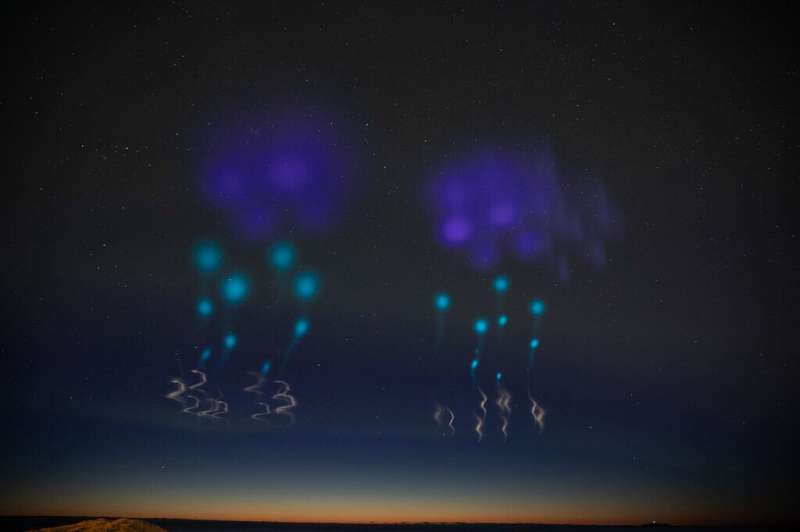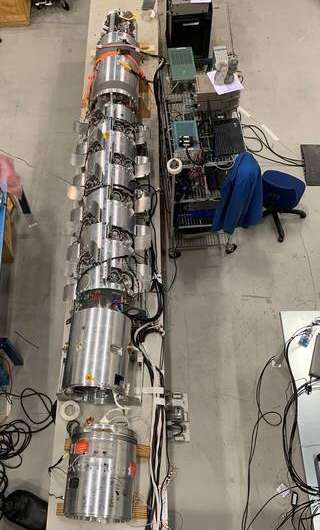That's because the air in the cusp is noticeably denser than air elsewhere in the spacecrafts' orbits around Earth. But no one knows why, or how. By understanding the forces at play in the cusp, scientists hope to better anticipate changes in spacecraft trajectories. The launch window for CREX-2, which launches from Andenes, Norway, opens at 4 a.m. EST (10 a.m. CET) on Dec. 1, 2021.
CREX-2 first aimed to learn more about the dynamics in the cusp in 2019, but although all systems were ready for launch, the mission never got off the ground. There was little solar activity at the time, and as a result, space weather conditions weren't right for the mission during the initial launch window. The COVID-19 pandemic further postponed its flight. Now, after a nearly two-year delay, CREX-2 is once again preparing to fly in hopes of answering questions about the cusp. The team is optimistic; the Sun is in a more active stage of its natural cycle this time around, increasing the chances that space weather conditions will be favorable for their mission to study an unusually dense region of the atmosphere.
While the density of Earth's atmosphere decreases rapidly with height, it stays consistent horizontally. That is, at any given altitude, the atmosphere is roughly the same density around globe.
This aspect of the mission requires complicated logistics. "It's quite a big chess game," Conde said. The team needs to see these tracers from several vantage points to get a comprehensive understanding of the wind patterns. Scientists, some of them graduate students, will be stationed throughout Scandinavia to photograph the tracers over the course of 20-30 minutes. One student will document them from a plane flying from Reykjavík, Iceland, and others will capture the glows from two sites on the Norwegian island of Svalbard.
There are some "Goldilocks" conditions necessary for launch. The cusp is only present around local noon, but the sky needs to be dark for the tracers' glow to be visible. That's why CREX-2 will launch in mid-winter, when there's very little sunlight at these extreme northern latitudes.

"We're threading a needle," Conde said. "We get about an hour or two each day when conditions are suitable to do the experiment." And, at least two of the stations need a clear view of the tracers for sufficient data collection. The 2019 launch window was open for 17 days, not one of which was suitable for CREX-2 to fly.
"The rocket business is a high-stakes game," Conde said. "You'll spend two or three years developing a payload, but ultimately, it all comes down to choosing when to press the button to capture the science you want." Sometimes, that moment doesn't arrive. Conde and the CREX-2 team are eager for another opportunity to launch. "Honestly, it feels amazing," Conde said. "To finally be trying again—I'm not quite sure I have the words for it."
Except in the cusp, where 250 miles overhead, there's a pocket of air roughly one and a half times denser than other air at that altitude. "You can't just increase the mass in a region by a factor of 1.5 and do nothing else, or the sky will fall," Conde said. Something invisible supports that extra mass, and the CREX-2 mission aims to figure out exactly what it is.
The mission is designed to measure the numerous factors that could potentially explain how the cusp's dense air stays suspended. Then, Conde said, scientists can "try and sort out which one is doing the work."
One possibility involves electric and magnetic effects in the ionosphere, the layer of Earth's upper atmosphere that is ionized by the Sun, meaning it contains electrically charged particles. Electrodynamics could support the denser air indirectly, or it may cause heating that generates vertical winds to keep the dense air aloft. CREX-2 has an array of instruments designed to measure these effects.
Another explanation might be that air in the entire vertical column of the cusp is denser than its surroundings. Stacked atop heavier air, the dense air 250 miles high would remain buoyant. But having a column of heavier air should also produce horizontal or even vortex-like winds, which CREX-2 is designed to look for.
And it will do so in style. The rocket will eject 20 soda can-sized canisters, each with its own small rocket motor, in four directions. The canisters are timed to rupture at different altitudes. When they burst, they'll release vapor tracers—particles often found in firework displays which glow by scattering sunlight or upon exposure to oxygen—in a three-dimensional grid in the sky. The wind will paint the sky with these glowing clouds, revealing how air moves in this unusual section of the atmosphere.
Explore further



